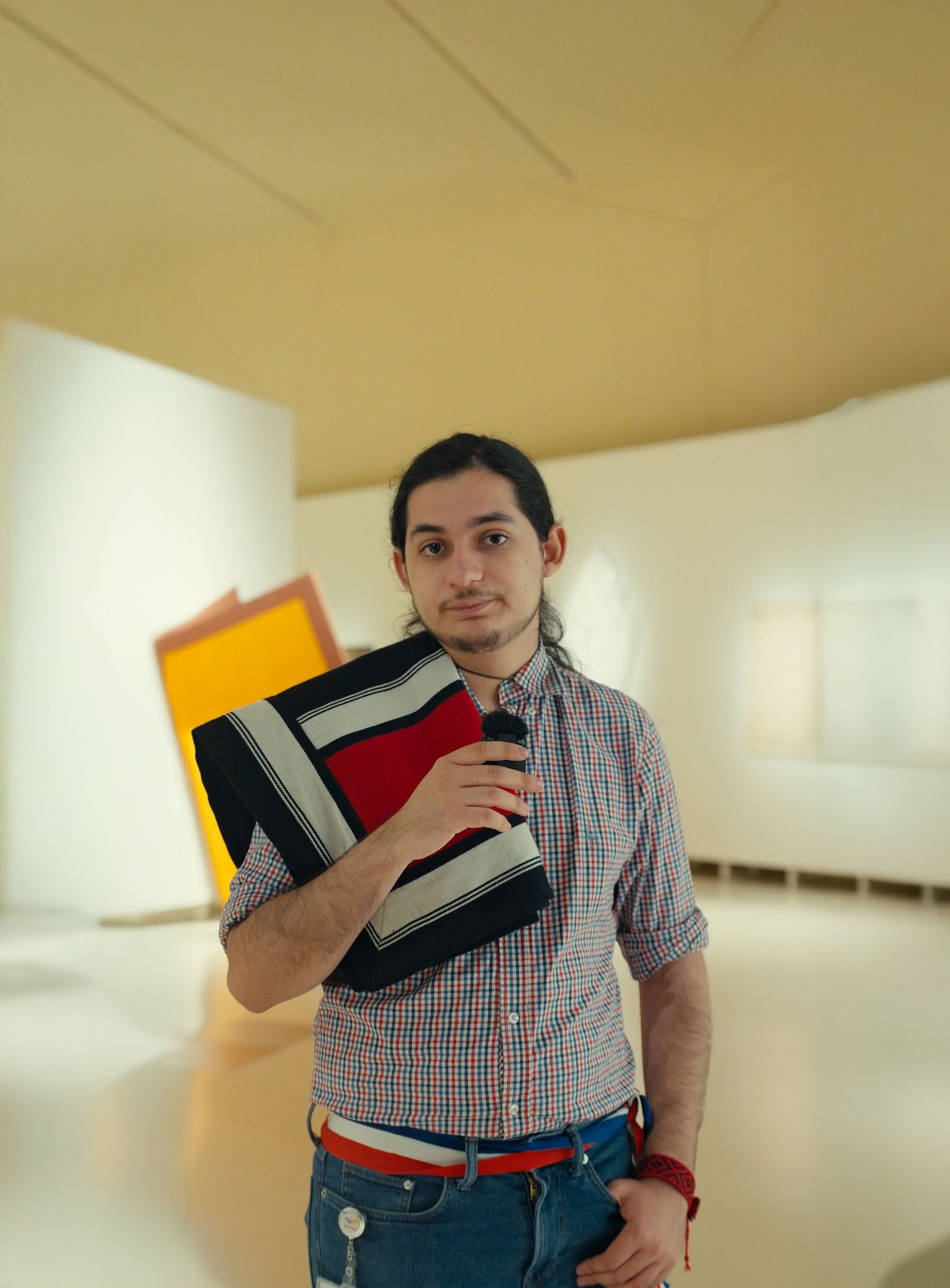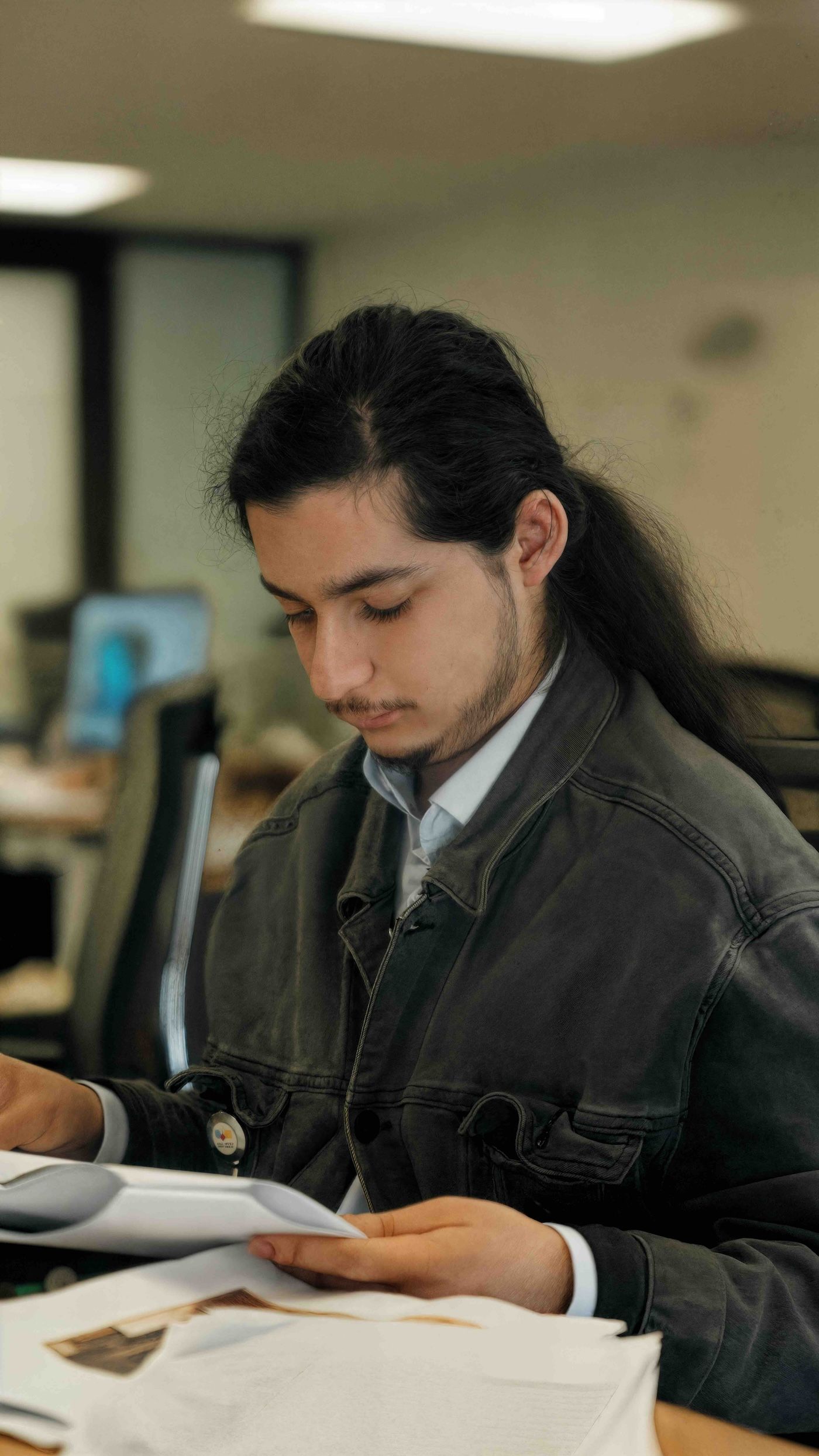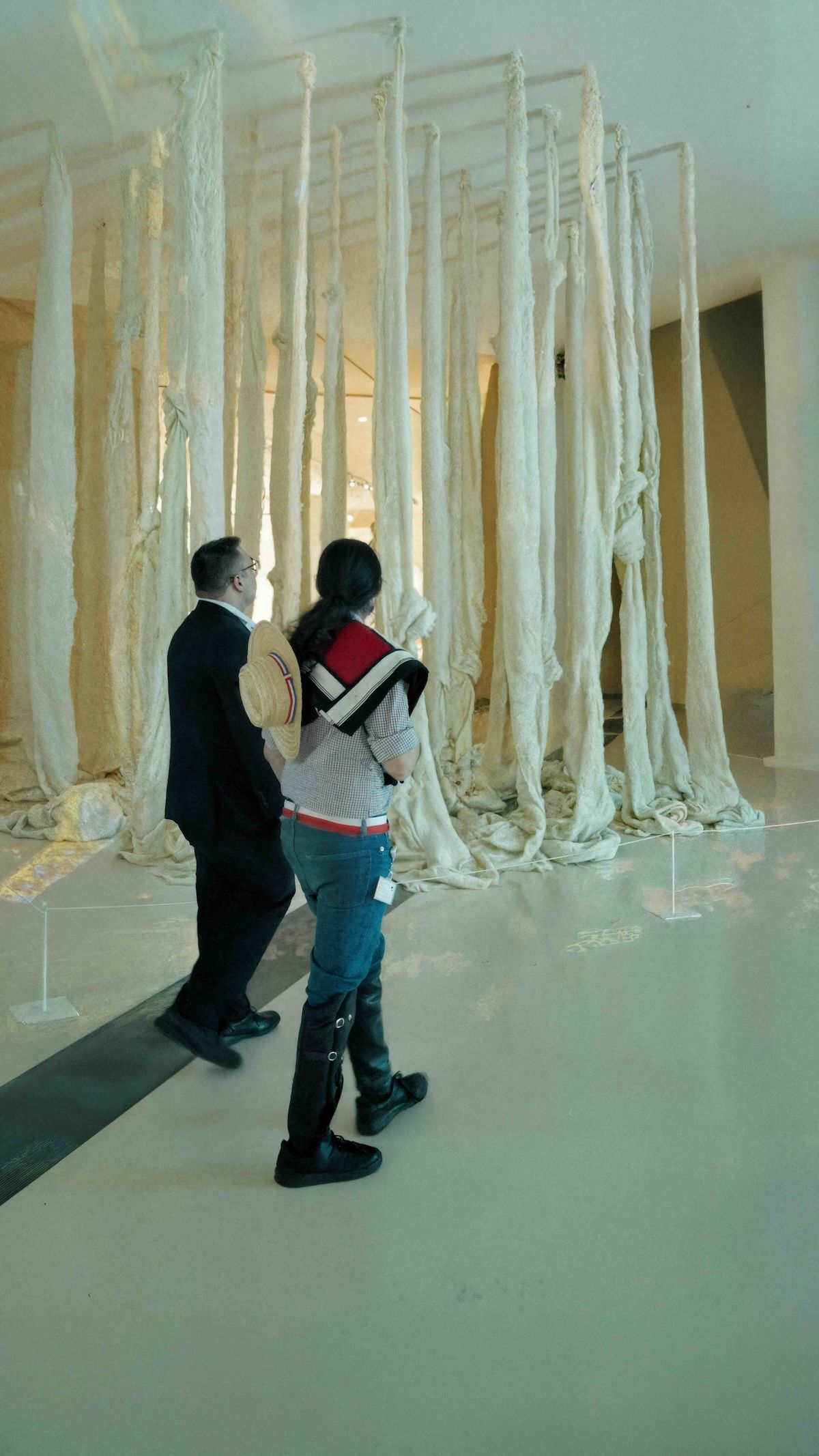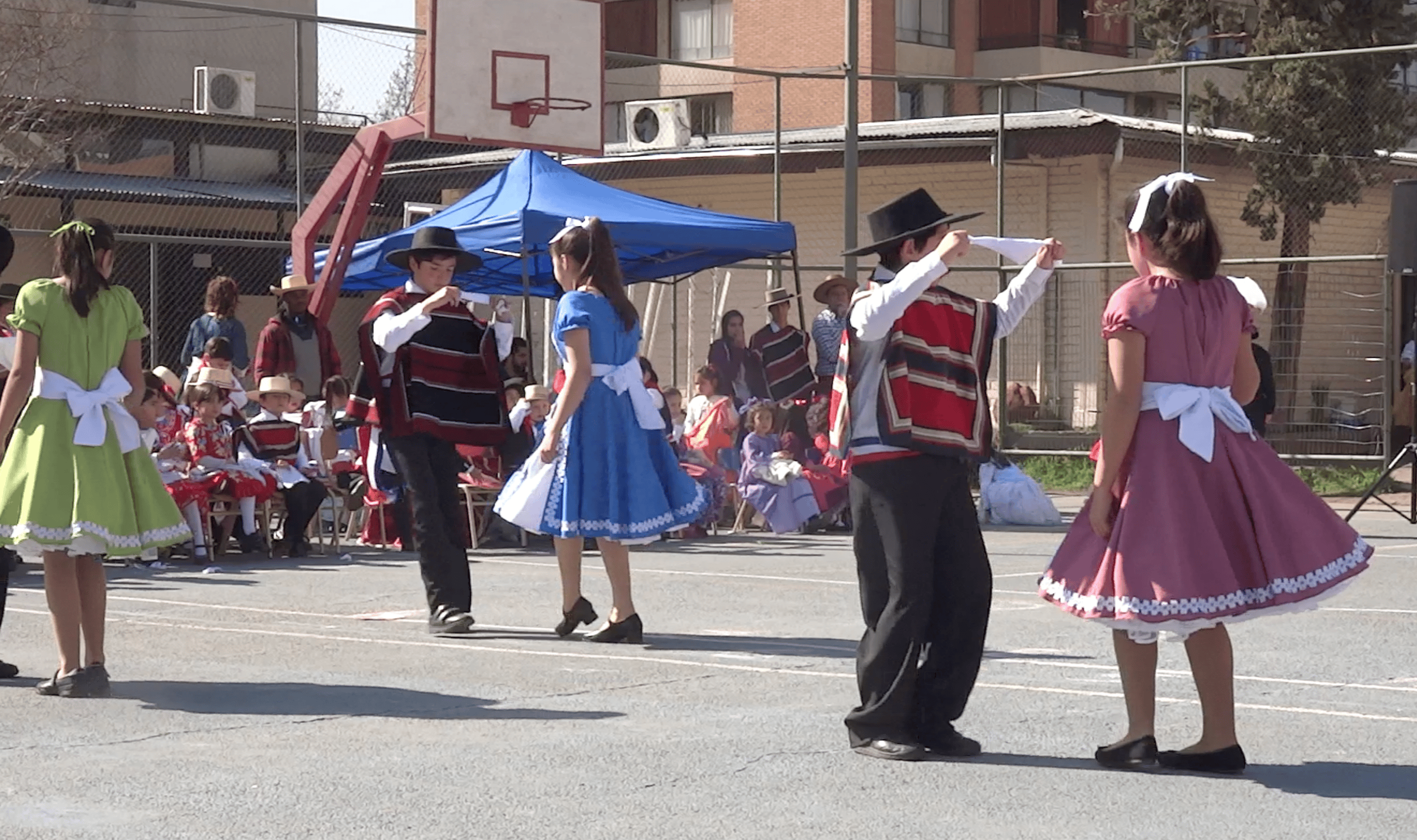Francisco Catril Jimenez on Moving to Doha, Chilean Culture and Interning at Qatar Museums
2025/08/26
Years of Culture
false
2025/08/26

Born and raised in Santiago, Francisco spent his early years in Chile, followed by a year in Canada, before relocating to Qatar with his family. “My journey has been an interesting one,” he reflects. “I’ve travelled to many countries on vacation and studied a lot of different things - even geology for a few months at one of Chile’s top universities, the Universidad de Chile. Along the way, I’ve met some really interesting people.”
Still a teenager, Francisco found himself navigating an entirely new culture, climate, and rhythm of life. “We came at the height of the summer,” he recalls, “so we got to experience the high humidity and high temperatures immediately right after our 24-hour flight.”
Now 21, he has spent nearly four years living in Qatar, an experience he describes as transformative. “Coming to Qatar was something entirely new to me, as I had never gone to the Middle East. The only things I really knew about it were from movies, series, games, and what I had heard from other people. But to be honest, the only accurate part was the scenery and architecture, everything else was unfamiliar,” he recounts. “It’s been very interesting to observe the customs and cultures of all the different nationalities that live in Qatar.”
Francisco speaks thoughtfully and with gratitude about the life his family has built in Doha. “Despite being a hard time for me and my family, we can all agree that we are grateful for the opportunities, security and much more that Qatar has offered us.”
Francisco is currently taking a gap year, which he chose to spend interning at Qatar Museums, a decision inspired by his lifelong fascination with history. “I’ve always had an interest in museums thanks to my grandparents, other family members, and my own curiosity,” he said. “So this internship was the perfect fit.”
At Qatar Museums, Francisco dove headfirst into a variety of projects, including tours and programming tied to the LATINOAMERICANO exhibition, which explored Latin American art and identity in collaboration with the Museo de Arte Latinoamericano de Buenos Aires (Malba). “I gave tours in Spanish or English every Saturday and Monday. I created a tour script that detailed all the important information the museum wanted to be shared, using a reference from the Malba Museum, and then translated it to English. It was later translated to Arabic as well.”

He quickly began giving daily tours. “Somehow… I got the hang of things,” he shares. “I learned by observing the curator, watching media with tour guides, and drawing from my own experiences giving informal tours at home, where we essentially have a mini museum because I collect so many things.” His work was even recognised by the museum’s Qatari curator. “He read my script and used parts of my research in his curator-led tours.”
Francisco’s favourite piece from the exhibition? A painting called Madroños or Mantilla Roja by Carlos Federico. “It’s one of the few works that exist by him, as he died at 22. The painting depicts his sister Maria Luisa. What drew me to this piece was the tragedy behind it and the feelings that were felt from the art itself. It was a passionate painting, you can tell just by looking at it.”

But it was Cecilia Vicuña’s Quipu installation that struck a deeply personal chord with Francisco, as a member of the Mapuche people, Chile’s largest Indigenous group.“Me, my dad, and brother are part of the Mapuche tribe. Our last name is Catril, which comes from Catrileo. Both are Spanish-ised forms of Catrillanca and Catrileufu.” He adds, “This piece is something I don’t think anyone would have expected—that Chilean art, let alone indigenous-inspired artwork, would end up in the Middle East. More than anything, I felt happy that Chile was being represented and that our indigenous roots were being shown to the world.”
Francisco also played a key role in organising Palabras y Pinceles, a four-part literature salon series at the National Museum of Qatar that spotlighted authors from Latin America. He was involved in researching writers, planning the sessions, and helping bring the event to life.
He describes how on the final night, which focused on Jorge Luis Borges, the series became an unexpected gathering of esteemed guests, with many ambassadors and their spouses attending from around the world. Francisco even gave some of them personal tours. “It was certainly a unique experience,” he says.
Francisco’s interest in museums isn’t just academic, it’s also personal. At home, he’s curated his own growing collection of marine life, fossils, coins, vintage figurines and more. “This passion was built by family members, toys and my own urge to preserve and collect,” he says.
He credits his grandparents with sparking his curiosity. “They travelled a lot and brought home souvenirs. Their apartment was filled with artworks, small sculptures and other trinkets. Growing up with all that, learning the stories behind them, and learning biology from my grandfather were the building blocks for my interest.” His uncles also contributed by sharing their own interests with him.
Over time, collecting became a form of storytelling and preservation. “If I were rich, I’d collect and preserve more,” he says. “But I’m content with my collections. They bring me joy, and I wouldn’t sell any of them or get rid of them.”
Living thousands of kilometres from home, staying connected to Chile hasn’t always been easy, especially after relocating to Qatar during a global pandemic. “When we moved here, it was during the height of COVID-19. Time zones, distance, and poor communication made it hard to keep in touch with friends,” he reflects.
Despite the distance, his connection to Chilean culture remains strong. “There are about 200 Chileans in Qatar, but we’re a bit spread out. Still, we’ve made interesting connections and have even given tours to Chileans passing through.”
One of his favourite memories from growing up in Santiago is celebrating Chile’s Independence Day, every 18th of September. “Each class is assigned a traditional dance from a specific region or culture in Chile. It could be anything from southern fishing village dances to Rapa Nui dances from Easter Island. We’d spend a week or so preparing, and then perform in front of all the parents. Some students also played instruments for the performances,” he explains. “I remember wearing the Huaso outfit and dancing the Cueca in front of everyone. It was nerve-wracking but looking back, it’s one of my fondest high school memories.”

Even now, living in Doha, Francisco sometimes finds himself revisiting those dances. “I still try to remember and practice the main traditional dance, the Cueca, though I can’t dance it like I once could.”
Francisco’s next steps are already taking shape. He hopes to undertake another internship with Qatar Museums before heading to Germany for work and further studies. “The main routes that I could go are museology or go with something more related to biology like Zoology,” he says. “This internship [at Qatar Museums] has definitely helped me polish my skills and understand better what I can do, and know what things I can improve upon.”
As the 2025 Year of Culture celebrates connections between Qatar, Chile, and Argentina, Francisco’s story reflects the spirit of those exchanges. His journey illustrates how heritage and new experiences intertwine to shape not only a young person’s identity but also a broader understanding between distant places.
Find out more about upcoming events in Doha and beyond as part of the 2025 Year of Culture.